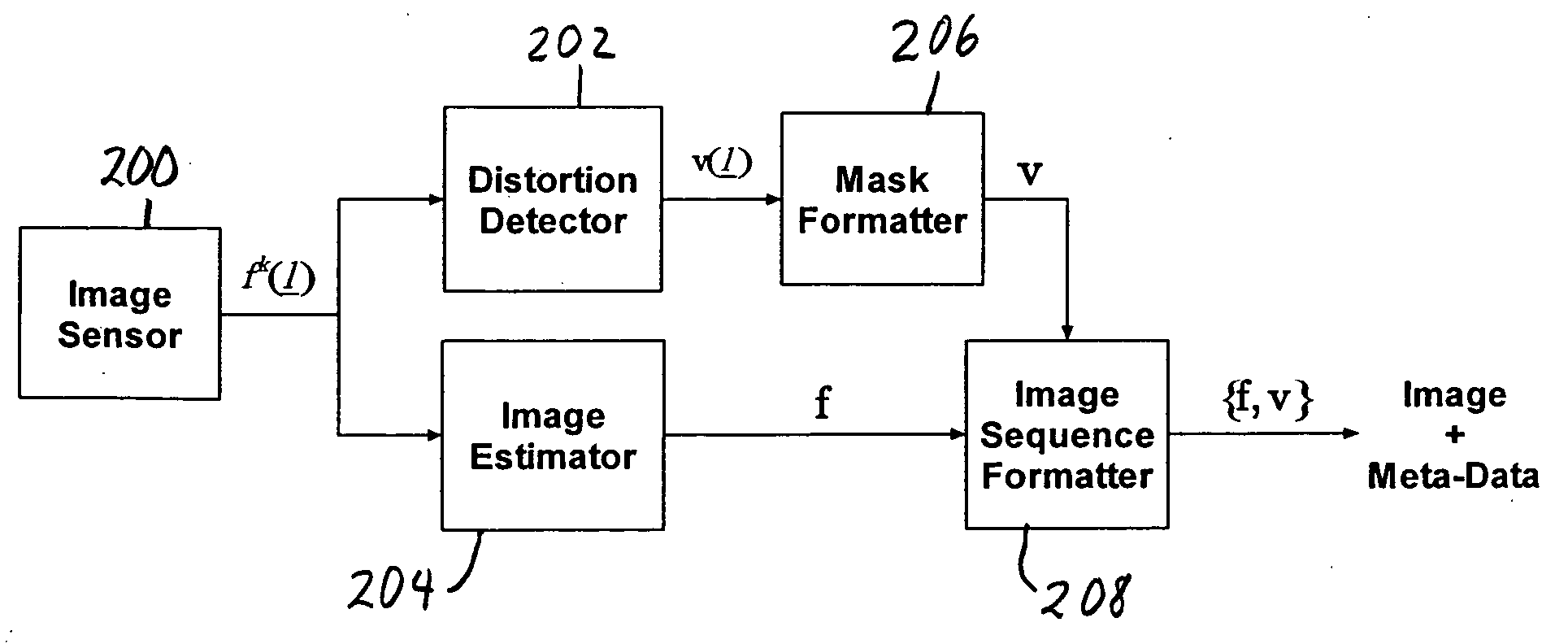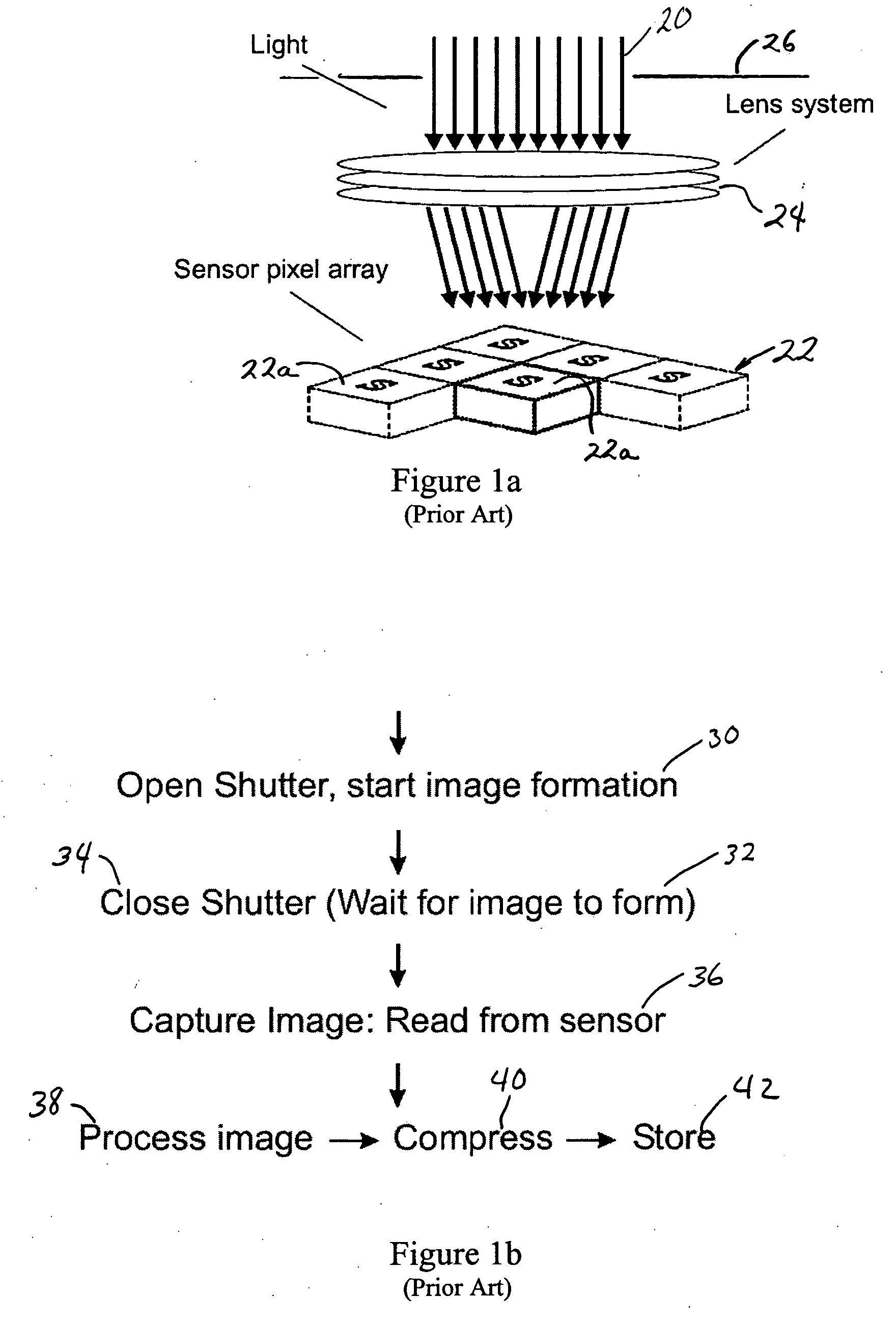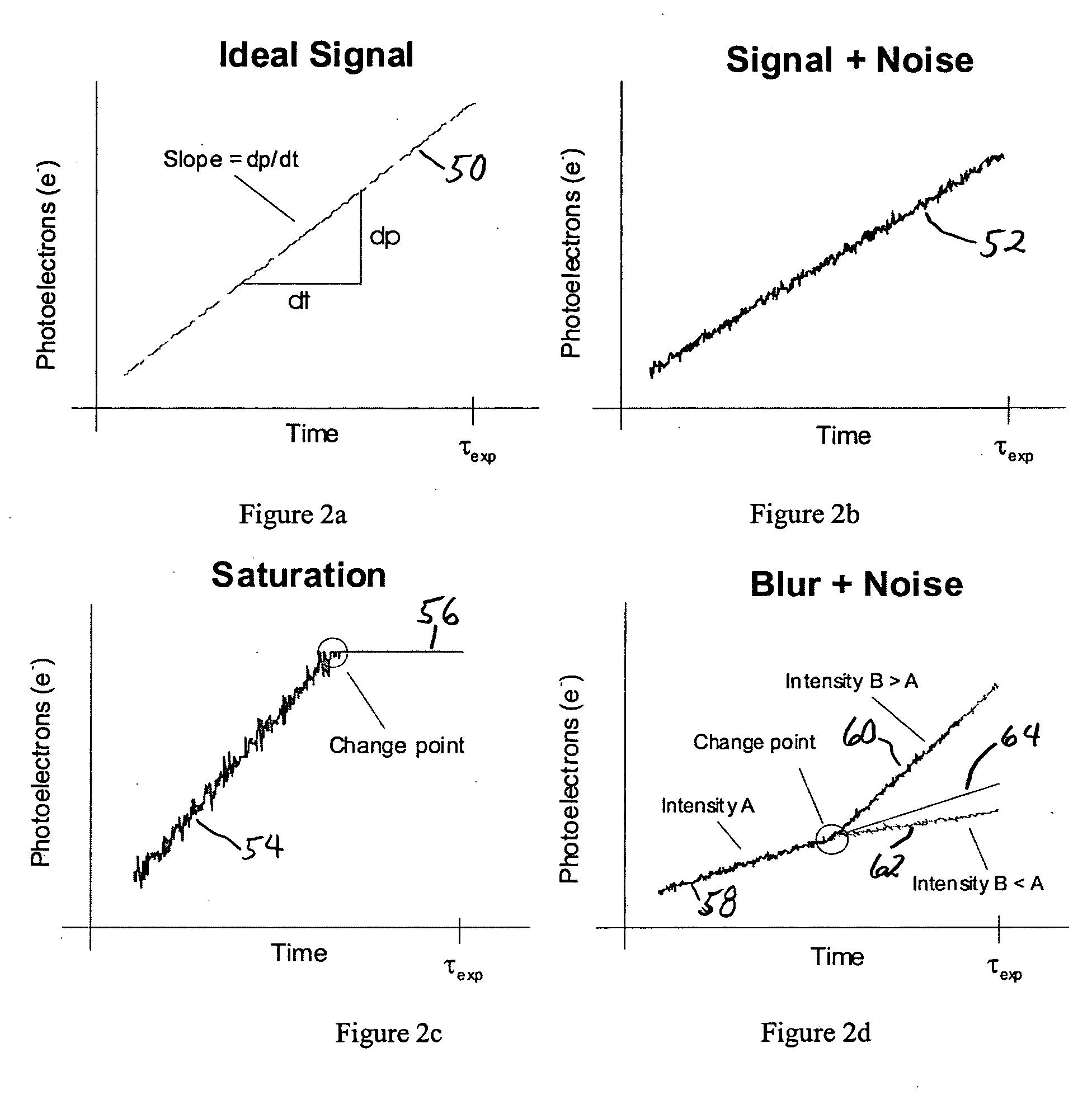This trend toward object or content based processing presents new opportunities as well as new challenges for the processing of digital still images and video.
For example,
lossy compression, inaccurate lens settings, inappropriate lighting conditions, erroneous
exposure times, sensor limitations, uncertain scene structure and dynamics are all factors that affect final
image quality.
However, post-processing of even the raw camera data remains limited if information regarding the scene and the camera is not incorporated into the post-processing effort.
Shutter management and
exposure time determination is one of the weaknesses of conventional image formation and is based on a one hundred year old film
image capture philosophy.
For this reason, some areas on the film are often underexposed or overexposed because of the global determination of exposure time.
In addition, most exposure time determination strategies are easily tricked by scene dynamics, lens settings and changing lighting conditions.
The global shuttering approach to image formation is only suitable for capturing static,
low contrast images where the scene and camera is stationary and the difference between bright and dark regions in the image is small.
For these and other reasons presented later herein, the performance of the current digital and film cameras are limited by design.
The passive image formation process described in the equation limits low light imaging performance, limits array (or film) sensitivity, limits array (or film)
dynamic range, limits image brightness and
clarity, and allows for a host of distortions including
noise, blur, and
low contrast to corrupt the final image.
This process impedes the performance of post-processing of images from diagnostic imaging systems, photography, mobile /
wireless and
consumer imaging,
biometrics, surveillance, and military imaging.
The major obstacle to accurate and reliable post-processing of digital images and video is the lack of detailed knowledge of the imaging
system, the image
distortion, and the image formation process.
Without this information, adjusting the
image quality after the image formation is an inefficient guessing game.
However, without detailed knowledge of the image formation process, the suite of image improvement tools in these packages: cannot correct the underlying source of the
distortion; are limited to user selectable or global
algorithm implementation; are not compatible with object oriented post-processing; are useful on a limited class of image distortions; are often applied in image regions that are not distorted; are not suitable for reliable automatic removal of many distortions; and are applied after the image formation process is complete.
The HST mirror was later fixed in a another mission; however, due to the available technology, many distorted images where salvaged by post processing.
Unfortunately most post-processing
software and
hardware implementations do not have access to nor do they incorporate or convey limited knowledge of the scene, the
distortion, or the camera in their processing.
In addition, the parameters that characterize the filters and algorithms used to reliably remove distortions from digital images and video require additional knowledge that is often lost after the image is formed and stored.
However, these parameters only describe the camera parameters not the scene structure or dynamics.
In general, post processing becomes inefficient in the absence of such knowledge in that the perceived distortion may not be in the user selected region of the image.
In this case, post-processing is applied in areas where no distortions exist, resulting in wasted computational effort and the possibility of introducing unwanted artifacts.
Despite the definition of sophisticated content or
object based encoding standards for digital still images and
digital video images, there remains the challenge of breaking down the image into its component objects.
 Login to View More
Login to View More  Login to View More
Login to View More 


